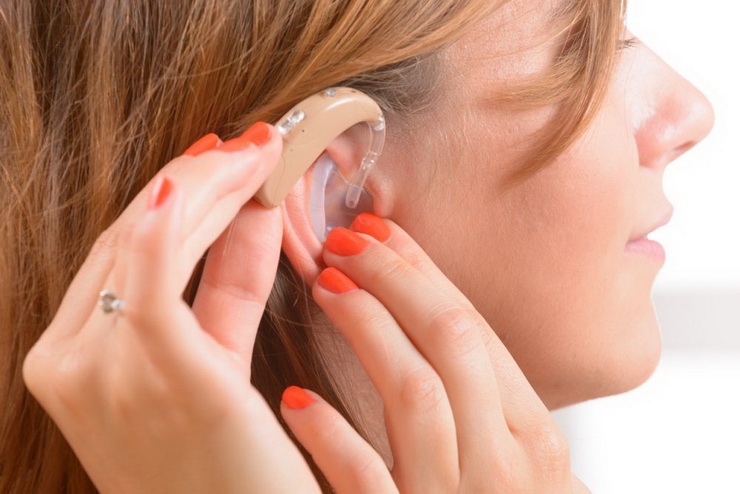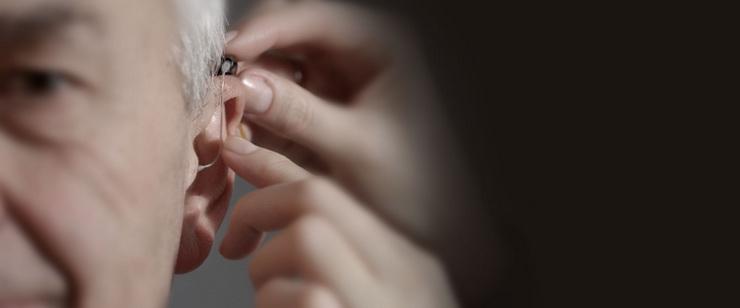It is impossible to ignore the impact of technology on hearing solutions, particularly the ongoing debate between analog vs digital hearing aids. Each day, a smaller, more sophisticated hearing aid is launched, with features that allow an individual to hear as naturally as possible.
Hearing aids have undergone significant transformations over the years. While analog hearing aids laid the foundation, digital hearing aids have introduced advanced features catering to diverse hearing needs.
This guide delves into the distinctions between analog and digital hearing aids, helping you make an informed choice.
Analog Vs Digital Hearing Aids: Which One’s Better?

Let’s try to understand the fundamental differences between analog vs digital hearing aids to determine why there’s a price difference between the two and which should be chosen.

1. Analog Vs Digital: Understanding The Basic Difference
Analog hearing aids are the most basic type of hearing aids – they amplify all sounds equally.
They do not account for whether the sound is speech or noise and disregard whether it might already be loud. In analog devices, there is a limit on the number of criteria that can be controlled, so there is, in turn, a limitation on fine-tuning the sound being delivered to the consumer.
The onset of digital sound processing technology has since changed how the abovementioned process is carried out. Microchips present in the digital device convert sound waves to binary code (the language of computers) and apply specific algorithms (mathematical formulae) to reduce noise, improve the sound quality of spoken voice, reduce feedback of the device (often producing an annoying whistling sound) and perform complex sound processing.
This processed sound is then played back to the ear, thus giving the user a comfortable hearing solution minus the noise and other distractions.
2. Amplification and Programmability
Some analog hearing aids are programmable for hearing loss and environments, while digital hearing aids can be programmed to suit individual needs and environments. Analog hearing aids provide too much amplification for loud sounds and too little for soft ones. Digital hearing aids provide just enough amplification so that soft, normal and loud sounds are heard clearly.
3. Analog Vs Digital Hearing Aids: Discrimination Between Speech and Unwanted Noise
Analog hearing aids make sounds louder but cannot discriminate between them. They cannot discriminate between speech and unwanted noise but just amplify everything. Digital hearing aids suppress background noise so that speech is easier to hear and understand, especially in noisy environments. Modern digital aids segregate speech patterns from the noise and selectively amplify it.
4. No. Of Microphones
Analog hearing aids have only one microphone, making participating in conversations in noisy environments difficult. Digital hearing aids have two microphones, allowing the user to focus on a particular speaker in a group.
5. Occlusion Effect
Analog hearing aids are subject to the occlusion effect – where the hearing aid wearer’s own voice gets trapped in the ear canal. This can make hearing one’s own voice an unbearable experience. With digital hearing aids, hearing one’s own voice is comfortable.

6. Battery Consumption and Maintenance
Analog hearing aids are not economical regarding battery consumption, while digital hearing aids consume less power and save batteries. Additionally, since analogue hearing aids have a lot of electronic components, they are subject to frequent repairs. Digital hearing aids are reliable and less prone to wear and tear.
7. Hearing From A Distance
Analog hearing aids can make it difficult to hear from a distance, especially if the sounds emanate from behind the hearing aid user. Sophisticated amplifiers used in digital hearing aids make hearing from a distance easier.
8. Differentiating Between Consonants and Vowels
With analog hearing aids, consonants are often masked by vowels in speech. With digital hearing aids, consonants are heard better because of multi-channel technology and better amplifiers.
9. Analog and Digital Hearing Aids: Compatibility With Mobile Phones
Mobile phones are not compatible with analog hearing aids – they always produce a disturbing buzzing sound. Conversing on mobile phones is easier and more clear with digital hearing aids. Additionally, the latest digital hearing aids offer connectivity with a mobile phone and remote controls through Bluetooth, allowing the user to control his/her hearing experience easily.
10. How The Latter Is Better
Digital hearing aids can be programmed for various listening environments and customised for the user to compensate correctly for his/her hearing loss.
The sound processing will alter at the touch of a button, filtering frequencies appropriate for a silent prayer hall or even a noisy cricket stadium. The fact that sound is available in a manipulative form in digital devices gives it tremendous flexibility to fine-tune and tweak sounds as per the listening capability of the user listening environment and deliver a better solution altogether.
Hence, digital hearing aids have the advantage of customizing better and providing personalized solutions.
This customization undoubtedly needs to be carried out in tandem with the hearing aid practitioner and manufacturing company personnel.

11. The Difference In Prices
Ultimately, it all boils down to the very question we started with: Why invest in a digital hearing aid over the low-cost analog alternative?
Part of the answer is in knowing the technical difference between analog and digital hearing aids, which we have already elaborated. Now, understanding which of these may suit your requirements better is a matter of understanding.
Digital hearing aids are costlier owing to superior technology and technical complexity including research and manufacturing. But this allows for some great features too. For instance, take into consideration the sheer size digital hearing aids are able to shrink into.
One of the most important features often demanded by consumers is that the device should be small and inconspicuous, thanks to the social stigma associated with hearing loss and how it is a sign of ‘old age’.
Digital technology has enabled the design of hearing aids that totally fit into the ear canal and are discreet. Invariably, more discreet means more expensive. Additionally, digital hearing aids also come equipped with the new features like connectivity, directionality, etc.
Sometimes, a higher price may also mean more services. So before rejecting a product over its high cost, one should consider what services are included along with the product.
Many companies offer free consultation, trial runs and final customization of the device, under watchful eyes of audiologists and other hearing care professionals.
Take into consideration the longevity of the product and divide the total cost over the number of years. You will be surprised to see that for that many years of seamless hearing and confident conversations, you perhaps didn’t pay all that much. It is important to consider that digital hearing aids offer a better quality of life, while analog hearing aids, though cheap, may not help you hear as naturally and effectively.

12. Analog Hearing Aid vs Digital Hearing Aid: The ‘Habit’ Factor
People who have been using analog hearing aids for a while may find it difficult to shift to digital hearing aids or may prefer not to. This is due to the ‘habit’ factor in the article. It is important to remember that while digital hearing aids may be the best available in the market, they may not suit everyone’s hearing needs or comfort.
When choosing a hearing aid, the only thing that should ideally matter is how it will help you regain your hearing abilities and confidence. While it is necessary to consider the price, and it is difficult to break a habit, one must not ignore the long-term benefits of choosing a technology that only improves with time and offers better devices to help you. Select a hearing aid that helps you hear and communicate as naturally as possible.
Looking to switch from your analog hearing aids to digital alternatives? Get in touch with Centre For Hearing today!
Call us on +91 9811227269 for a FREE CONSULTATION!



















